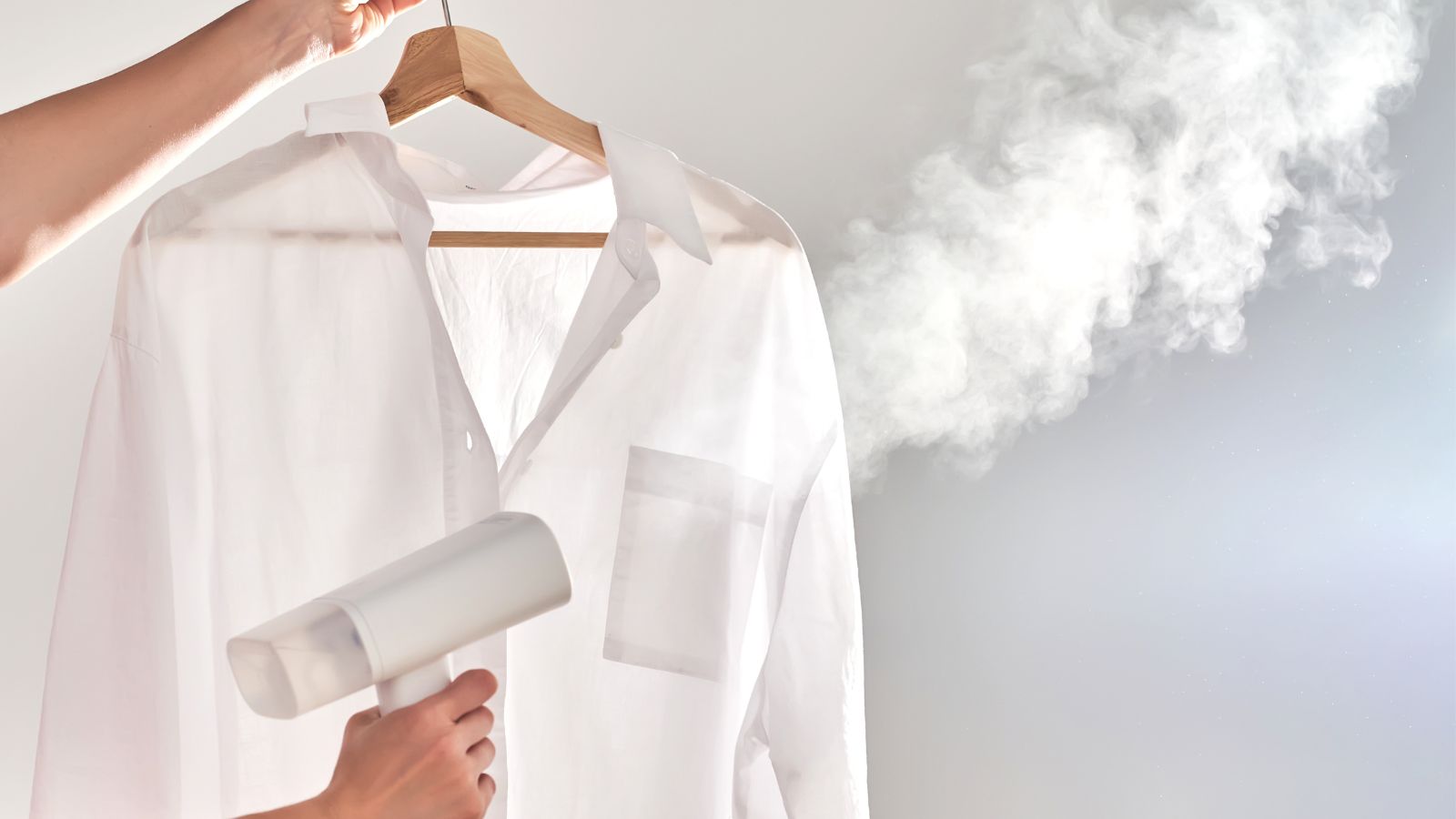
Clothes steamers may only use water, but they still need cleaning if you want to avoid damaging your clothing and upholstery.
From mineral deposits to mold and bacteria, several hidden nasties can clog up your steam cleaner or transfer onto your clean clothing, damaging both your appliance and your fabrics.
This is how professional cleaners clean a clothes steamer in as few as four steps to keep your clothes and household upholstery fresh.
How to clean a clothes steamer
How do you clean an appliance that only uses water, without using water and making the problem worse?

1. Use vinegar to descale and sanitize
Daniel Feliciano, co-founder and CEO of Clotheslyne suggests cleaning with vinegar to help remove limescale and kill bacteria.
Before cleaning your appliance, he recommends unplugging it and allowing it to cool completely first so that you are not burned by any remaining steam before emptying out the leftover contents in the reservoir. ‘For descaling, mix a solution of one part distilled white vinegar and two parts water, fill the tank, and let it sit for 30-60 minutes,’ Daniel suggests. ‘Then, thoroughly steam the solution and rinse the tank with fresh water.’
2. Turn to a commercial descaler
'If vinegar hasn't done enough to remove limescale, and your clothes steamer is still sputtering when in use, then you may need to turn to commercial descaling solutions, such as this coffee machine descaler from Amazon instead', says Taylor Robertson, expert and brand manager at Heritage Park Laundry Essentials.
'This is more common if you have never cleaned a clothes steamer you have owned for a while, or if you live in an area with particularly hard water', she continues. 'To avoid this, try to use distilled water when cleaning with a steamer, and when flushing out the appliance itself'.
3. Pay close attention to the pipes and nozzles
The pipes and steam nozzle are the most important (and tricky) parts to clean. Blockages in these areas can overwork the machine, leading to breakages or causing your appliance to sputter when in use, throwing out droplets of boiling water and giving you less control over the steam flow.
'The best cleaning tip to avoid this health hazard is to inspect the nozzle when it is cool and use a bristle brush or a pin to remove blocks from the tip,' says laundry expert Daniel Feliciano.
4. Clean regularly to avoid stubborn build-ups
'To make cleaning a clothes steamer easier, it is good practice to clean your steamer regularly – usually every two to three months depending on your usage,' recommends Angela Rubin, cleaning expert and founder of Hellamaid.
When cleaning, check over each component to ensure they are working correctly, and give the exterior of the appliance a wipe-down with a damp cloth and mild dish soap to keep it looking and functioning at its best.
FAQs
Can I put fabric softener in my steam cleaner?
It is not a good idea to put fabric softener in a steam cleaner as it can coat the interior of the steamer and lead to damage and blockages. When steaming clothes, steam cleaning a mattress, or steam cleaning a couch, use plain distilled water to help remove wrinkles and kill bacteria, opting for a linen spray after steaming if you want to improve its scent.
Do steamers really clean?
Steam cleaners help to kill bacteria, break down dirt so that it can be shaken or brushed off more easily, and remove allergens thanks to their high temperatures and pressurized steam. It is important to note, however, that this is only the case if your steamer itself is clean and not blocked with mineral deposits or mildew.
'How you store your clothes steamer between uses will make a big difference to how often you need to clean your appliance before it becomes blocked,' says Taylor Robertson of Heritage Park Laundry Essentials. Emptying the reservoir after every use and allowing the steamer to cool completely before putting it away in a cool, dry area helps to prevent limescale and mildew from building up in the pipes.







